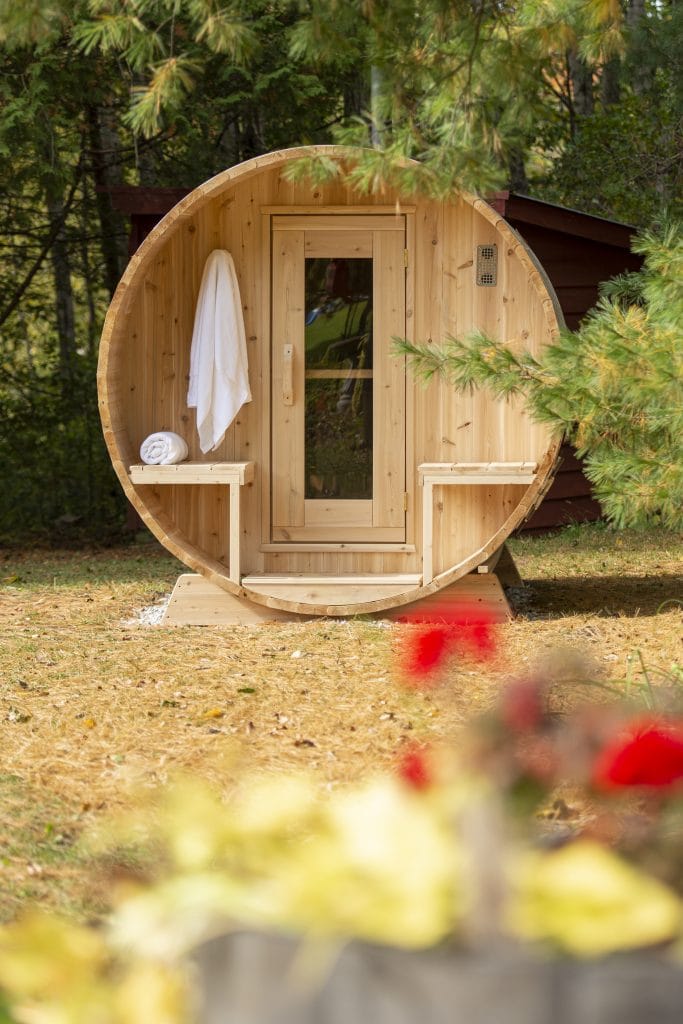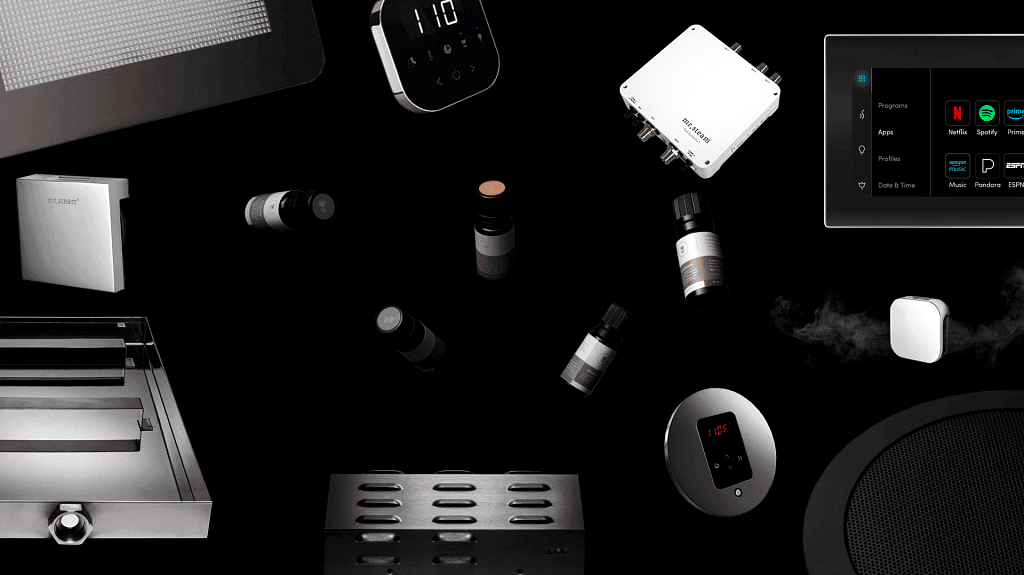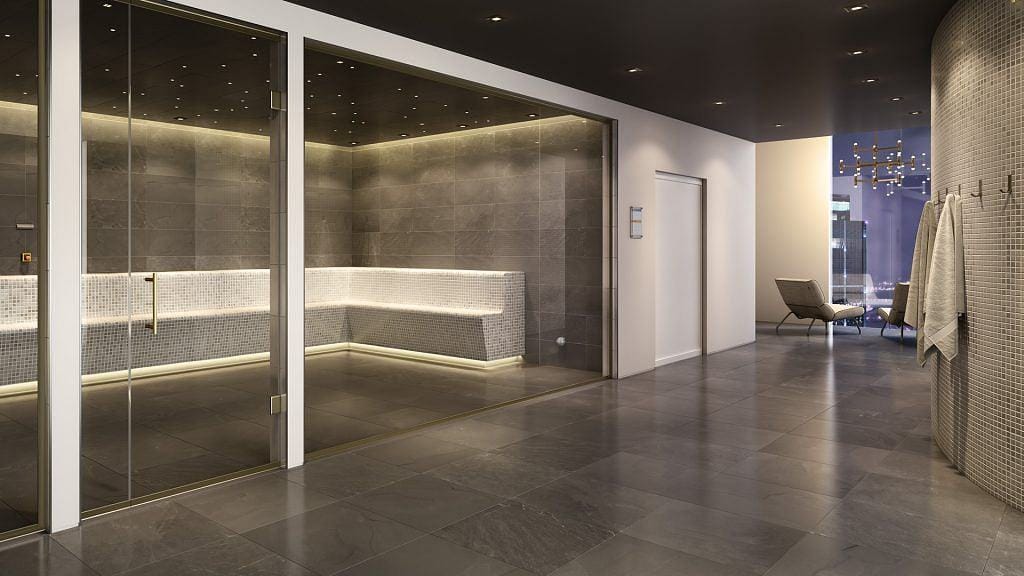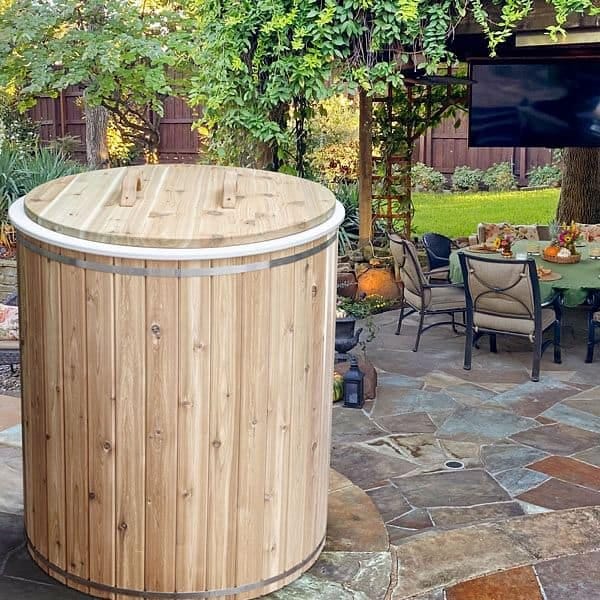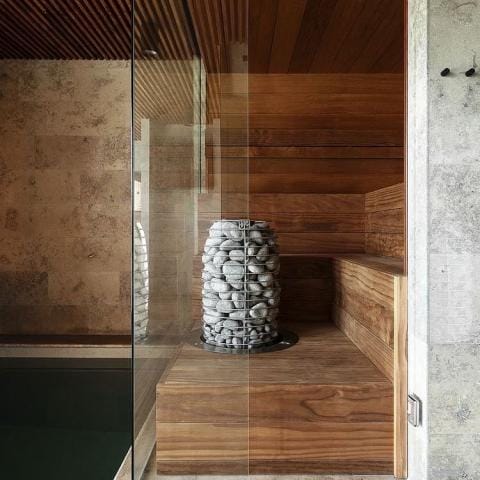Our Sauna Blog, Sauna
How to Use a Sauna Properly? Guide for Home and Gyms
Learning how to use a sauna properly is very important in order to make the most out of your sauna session, make sure you use it safely and the right etiquette.
Looking to understand the best way to use a sauna? This guide is here to help. We’ll cover everything from preparing yourself and the sauna for a session to understanding the different types and how to use them safely. We’ll also delve into proper sauna etiquette to ensure a relaxing and enjoyable experience for yourself and others.
How to Use a Sauna to Get the Most Out of It?
For many, the sauna is a haven of relaxation and rejuvenation. But to truly maximize the benefits of a sauna session, both for your mind and body, some preparation is key. Here’s how to set yourself up for a successful and enjoyable sauna experience:
-
Preparare Yourself
Before stepping into the warm embrace of the sauna, take some time to prepare your mind and body for the experience. Here’s what you’ll need to do:- Hydrate: Saunas can cause you to sweat profusely, so proper hydration is essential. Aim to drink plenty of water (at least two glasses) in the hours leading up to your session. This will help your body sweat efficiently and prevent dehydration.
- Lighten Up: Avoid heavy meals before entering the sauna. A light snack is perfectly
acceptable, but a full stomach can make you feel uncomfortable in the hot environment. - Cool Down: If you’ve been exercising vigorously, allow yourself ample time to cool down before entering the sauna. Aim for at least an hour to ensure your body isn’t working overtime to regulate temperature.
- Shower Up: Take a warm shower before entering the sauna. This rinses away any dirt or sweat, allowing you to sweat more effectively during your session. Be sure to pat yourself dry though, as sweat evaporates more easily from dry skin.
- Mind Your Mood: The sauna is a place to unwind and de-stress. Leave your worries and electronic devices at the door. Focus on taking deep breaths and letting your muscles relax.
By following these simple steps, you’ll prepare your body for the heat and set yourself up for a truly restorative sauna experience.
- Hydrate: Saunas can cause you to sweat profusely, so proper hydration is essential. Aim to drink plenty of water (at least two glasses) in the hours leading up to your session. This will help your body sweat efficiently and prevent dehydration.
-
Prepare the Sauna
Once your mind and body are prepped, it’s time to get the sauna ready for your blissful escape. The specifics will vary depending on whether you have an electric or wood-fired sauna, but here’s a general guide:- Turn it On (Electric): For electric saunas, this is a simple matter of flipping the switch and letting it preheat. Allow at least 30-45 minutes for the sauna to reach its ideal temperature, typically between 150-195 degrees Fahrenheit (65-90 degrees Celsius).
- Fire Up the Furnace (Wood-Fired): For wood-fired saunas, light the fire well in advance, ideally 1-2 hours before your desired use time. This allows the rocks to heat thoroughly and ensures a consistent temperature throughout your session.
- Air it Out: If the sauna hasn’t been used recently, it’s wise to run it for a few minutes with the door open to allow any stale air to escape.
- Gather Your Supplies: Here’s where you can enhance your experience. Have a large, clean towel to sit or lie on, a ladle and bucket for throwing water on the rocks (if it’s a traditional sauna), and perhaps a small essential oil diffuser (ensure it’s sauna-safe!).
- Turn it On (Electric): For electric saunas, this is a simple matter of flipping the switch and letting it preheat. Allow at least 30-45 minutes for the sauna to reach its ideal temperature, typically between 150-195 degrees Fahrenheit (65-90 degrees Celsius).
-
Dry Heat
The initial stage of your sauna experience will be in the dry heat. Here’s why dry heat is beneficial and how long you should aim to stay in this environment:- Gentle Acclimation: The dry heat allows your body to gradually adjust to the increased temperature. This is gentler on your system compared to a sudden burst of heat.
- Increased Circulation: As the heat rises, your blood vessels dilate, promoting better blood flow throughout your body. This improved circulation can help deliver oxygen and nutrients more efficiently to your muscles and tissues.
- Relaxation and Stress Relief: The warmth can help loosen tight muscles and ease tension, promoting a sense of relaxation and well-being.
Remember, you can always return to the sauna for another session later. The key is to find a duration that allows you to reap the benefits without pushing yourself too far.
- Gentle Acclimation: The dry heat allows your body to gradually adjust to the increased temperature. This is gentler on your system compared to a sudden burst of heat.
-
Cool Down
The cool down phase after the dry heat is just as important as the warm-up. Here’s why taking the time to cool down properly is essential:- Regulated Temperature: Saunas raise your core temperature. The cool down helps your body return to its normal temperature range in a controlled way. This prevents overheating and potential health risks.
- Boosts Circulation: The alternation of hot and cold exposure can stimulate your circulatory system. As you cool down, your blood vessels constrict, which can help push blood back towards your heart. This improved circulation can leave you feeling refreshed and energized.
- Improves Recovery: The cool down period can aid in muscle recovery after exercise by helping to flush out lactic acid buildup. This can potentially reduce muscle soreness and stiffness.
How long should you cool down? A good rule of thumb is to cool down for roughly the same amount of time you spent in the sauna. So, if your sauna session was 15 minutes, aim for a 15-minute cool down period.
There are various ways to cool down effectively. A cool shower, a plunge pool (if available), or even just relaxing in a cool room can all be beneficial. The key is to find a method that allows you to gradually lower your body temperature and leave you feeling refreshed.
- Regulated Temperature: Saunas raise your core temperature. The cool down helps your body return to its normal temperature range in a controlled way. This prevents overheating and potential health risks.
-
Include Steam
Traditionally, saunas utilize dry heat. However, some saunas incorporate a method to introduce steam, creating a more humid environment. If your sauna offers this option, here’s how to incorporate steam safely and effectively:- Gradual Increase: Don’t overwhelm yourself with a sudden burst of steam. Start by adding a small ladleful of water to the hot rocks. This will create a gentle wave of steam that won’t be too intense.
- Listen to Your Body: While some people enjoy the additional warmth and therapeutic effects of steam, others may find it stifling. Pay attention to how you feel. If you experience any discomfort, shortness of breath, or difficulty breathing, it’s best to avoid the steam altogether.
- Short Bursts: Unlike the dry heat stage, steam sessions should be brief. Aim for no more than 2-3 minutes at a time. You can always repeat this process throughout your sauna session if desired.
Why Include Steam?
While not essential, steam can offer some additional benefits:
- Easier Breathing: For some, the addition of steam can make the hot air feel easier to breathe in. This can be particularly helpful for those who find dry heat drying or irritating.
- Loosens Congestion: The moist heat from steam can help loosen mucus and ease congestion, particularly beneficial if you’re suffering from a cold or allergies.
- Enhanced Aromatherapy: If you’re using a sauna-safe essential oil diffuser, the steam can help carry the scent throughout the sauna, creating a more relaxing and therapeutic experience.
Remember, steam inhalation is not for everyone. If you have any respiratory concerns, consult your doctor before using a sauna with steam capabilities.
- Gradual Increase: Don’t overwhelm yourself with a sudden burst of steam. Start by adding a small ladleful of water to the hot rocks. This will create a gentle wave of steam that won’t be too intense.
-
Cool Down, for Good
The final cool down, after your last cycle of dry heat (and optional steam), is the final piece of the puzzle for a successful sauna experience. Here’s why taking this final step is important:- Complete the Cycle: The cool down allows your body to fully return to its normal temperature range. Skipping this step can leave you feeling overheated and uncomfortable.
- Promotes Relaxation: The gradual decrease in body temperature can further enhance feelings of relaxation and well-being. This can help you unwind and de-stress after your sauna session.
- Improved Sleep: The relaxed state achieved through proper sauna use, including the cool down, can contribute to a better night’s sleep.
- Hydrate and Replenish: After sweating it out, your body will be slightly dehydrated. Take the time to rehydrate with water or a cool, electrolyte-rich beverage. You can also replenish lost minerals with a healthy snack.
By taking the time for a final cool down and proper post-sauna care, you’ll maximize the benefits of your sauna experience and leave you feeling refreshed, relaxed, and ready to take on the day.
- Complete the Cycle: The cool down allows your body to fully return to its normal temperature range. Skipping this step can leave you feeling overheated and uncomfortable.
-
How to Use a Sauna Safely?
While saunas offer a wealth of benefits, safety should always be your top priority. Here are some key tips to ensure you enjoy your sauna experience safely:- Hydration is Key: As mentioned earlier, saunas cause you to sweat profusely. To avoid dehydration, drink plenty of water (at least two glasses) before your session and replenish fluids afterward with water or an electrolyte-rich beverage.
- Know Your Limits: If you have any underlying health conditions, particularly heart disease, high blood pressure, or uncontrolled diabetes, consult your doctor before using a sauna.
- Medications Matter: Certain medications, such as those that affect blood pressure or those that make you drowsy, can interact negatively with the heat of a sauna. Always check with your doctor if you’re unsure about potential interactions.
- Leave Alcohol Out of It: Alcohol dehydrates you and can impair your judgment. Avoid consuming alcohol before, during, or after your sauna session.
- Listen to Your Body: Dizziness, lightheadedness, or shortness of breath are all signs you need to exit the sauna immediately. Cool down in a well-ventilated area and rehydrate. If symptoms persist, seek medical attention.
- Start Slow and Short: If you’re new to saunas, begin with short sessions (10-15 minutes) and gradually increase the duration as you become more accustomed to the heat.
- Pregnant Pause: Pregnant women should avoid using saunas altogether due to the potential risk of overheating.
- Communicate and Supervise: If using a public sauna, be mindful of others. If you have any concerns, don’t hesitate to ask a staff member for guidance. Always supervise children in the sauna environment.
By following these safety guidelines, you can ensure your sauna experience is both enjoyable and risk-free. Remember, relaxation and rejuvenation should be the focus, so listen to your body and prioritize your well-being.
- Hydration is Key: As mentioned earlier, saunas cause you to sweat profusely. To avoid dehydration, drink plenty of water (at least two glasses) before your session and replenish fluids afterward with water or an electrolyte-rich beverage.
How to Use a Sauna in a Hygienic Way?
Saunas are meant to be a relaxing and rejuvenating experience, but hygiene plays a crucial role in creating a pleasant environment for everyone. Here’s how to ensure your sauna session is both clean and considerate:
- Shower Before You Saun: Take a warm shower to remove any dirt, sweat, or lotions from your body. This allows you to sweat more effectively and prevents the transfer of bacteria to the sauna benches.
- Towel Up: Always use a large, clean towel to sit or lie on in the sauna. This protects the benches from direct contact with your skin and absorbs sweat. Avoid using the same towel for multiple sessions; bring a fresh one each time.
- What to Wear (or Not Wear): Traditionally, saunas are entered with minimal clothing. Opt for a clean, loose-fitting towel or swimsuit. Avoid wearing anything tight-fitting or made of synthetic materials, as these can trap heat and sweat, leading to discomfort.
- Mind Your Manners: Be mindful of others sharing the sauna space. Avoid shaving, applying lotions, or using strong-smelling products in the sauna. These practices can be unpleasant for others.
- Rinse Off After: After your sauna session, take another shower to remove sweat and any lingering impurities. You can use a gentle cleanser if desired, but avoid harsh soaps that can strip your skin of its natural oils.
By following these simple hygiene tips, you’ll contribute to a clean and enjoyable sauna experience for yourself and everyone sharing the space. Remember, a little courtesy goes a long way!
Important Notes of Using Different Types of Saunas
How to Use an Electric Sauna?
Electric saunas offer a convenient and consistent heat source. Simply set the thermostat to your desired temperature (typically between 150-195 degrees Fahrenheit or 65-90 degrees Celsius) and allow 30-45 minutes for preheating. Unlike wood-fired saunas, there’s no need to manage flames or tend to the fire. To enhance the experience and create bursts of steam for improved circulation and relaxation, ladle small amounts of water onto the hot rocks. Be cautious not to drench the rocks, as this can extinguish the heating elements and reduce the overall heat.
How to Use an Infrared Sauna
Infrared saunas use radiant heat panels to directly warm your body, penetrating deeper than traditional saunas. Unlike electric saunas that heat the air, infrared saunas typically operate at lower temperatures (around 100-140 degrees Fahrenheit or 38-60 degrees Celsius). Since your body absorbs the heat directly, you may experience a good sweat even at these lower temperatures. To maximize the benefits, position yourself directly facing the infrared panels for optimal heat exposure.
How to Use Traditional Saunas
Traditional saunas rely on wood-fired heaters to heat rocks, creating dry heat. The experience requires more planning compared to electric saunas. Light the fire well in advance (ideally 1-2 hours before use) to ensure the rocks are thoroughly heated. You can control the intensity of the heat and create steam by throwing ladles of water on the hot rocks. Be mindful not to throw too much water at once, as this can create excessive steam and make the sauna uncomfortably humid. Traditional saunas often offer a more rustic experience and may have a slightly smoky aroma due to the wood-burning process.
How to Use Saunas at Gyms?
Gyms often offer saunas as a bonus amenity to unwind after a workout. To ensure a relaxing and enjoyable experience for everyone, here’s a guide to proper sauna etiquette:
- Dress Code: Most gyms have a “swimsuit or towel” policy for the sauna. Opt for a clean, loose-fitting swimsuit or a large towel to sit or lie on. Avoid tight clothing or anything made of synthetic materials that can trap heat and sweat.
- Cleanliness is Key: Always shower before entering the sauna. This removes dirt, sweat, and lotions, allowing you to sweat more effectively and preventing the transfer of bacteria to the benches.
- Towel Up: Bring a large towel, not just to sit on but also to cover yourself if lying down. This provides a barrier between your skin and the bench and helps absorb sweat.
- Respect the Space: Saunas can get crowded, especially during peak hours. Be mindful of others and avoid spreading out your belongings. If the sauna is full, consider waiting for a spot to open up.
- Silence is Golden: The sauna is meant to be a place for relaxation. Keep conversation to a minimum and avoid loud noises that can disrupt the tranquility of the space.
- Sitting or Lying? Both positions are acceptable. Sitting upright allows for better air circulation, while lying down can feel more relaxing. Be mindful of others if the sauna is crowded and adjust your position accordingly.
- Shorter Sessions: Gym saunas are often shared spaces. Consider shorter sessions (10-15 minutes) to allow others a chance to enjoy the sauna as well.
- Listen to Your Body: If you start to feel dizzy, lightheaded, or uncomfortable, it’s time to exit the sauna and cool down. Don’t push yourself beyond your limits.
- Hydrate: Drink plenty of water before, during (if possible with small sips), and after your sauna session to prevent dehydration.
By following these simple guidelines, you can contribute to a respectful and enjoyable sauna experience for everyone at the gym. Remember, a little courtesy goes a long way in creating a positive environment for relaxation and rejuvenation.


